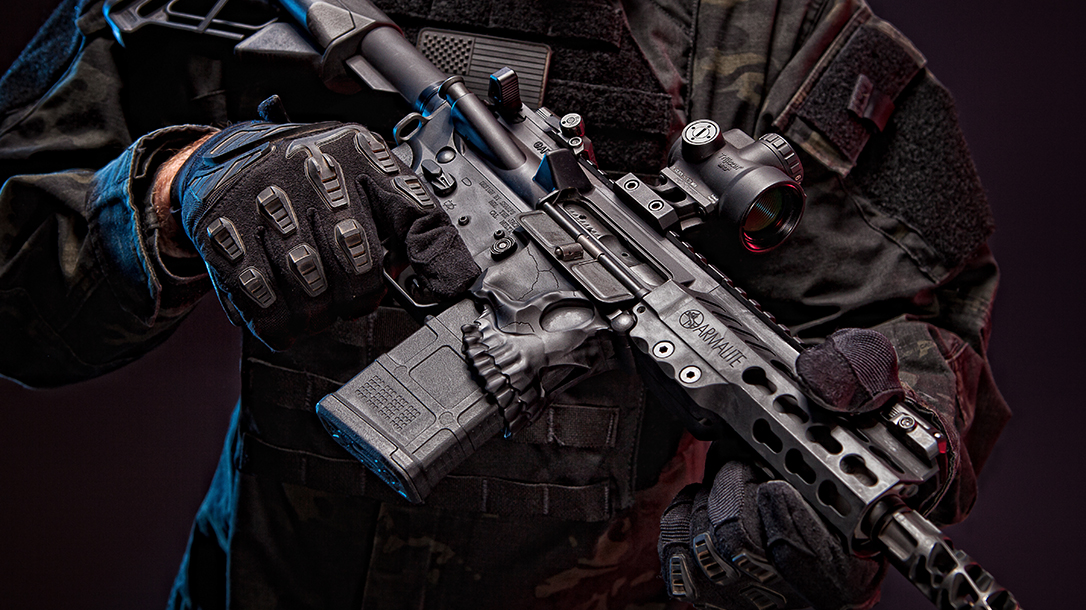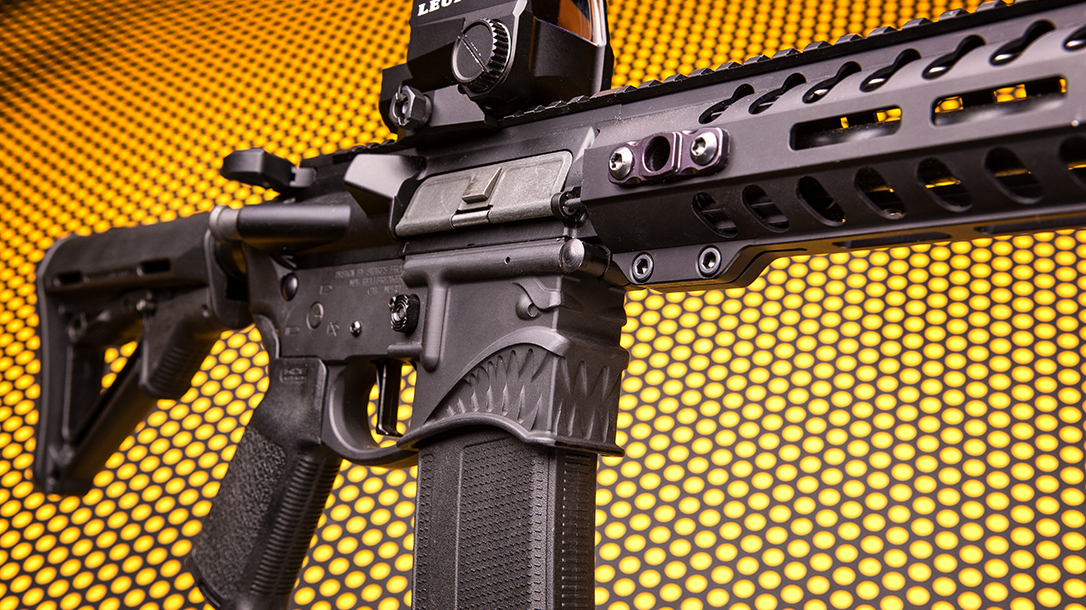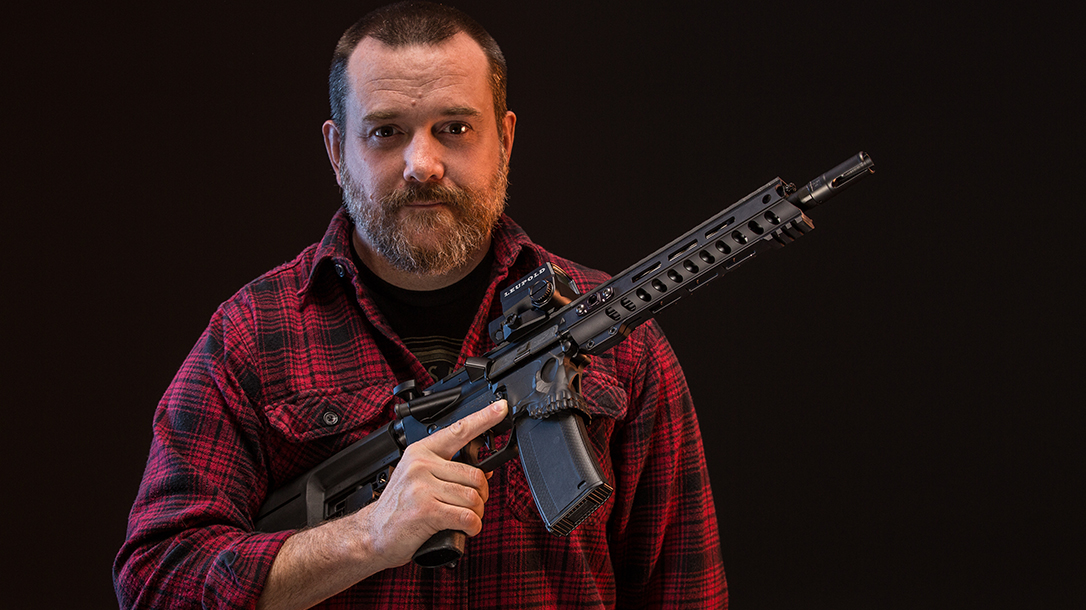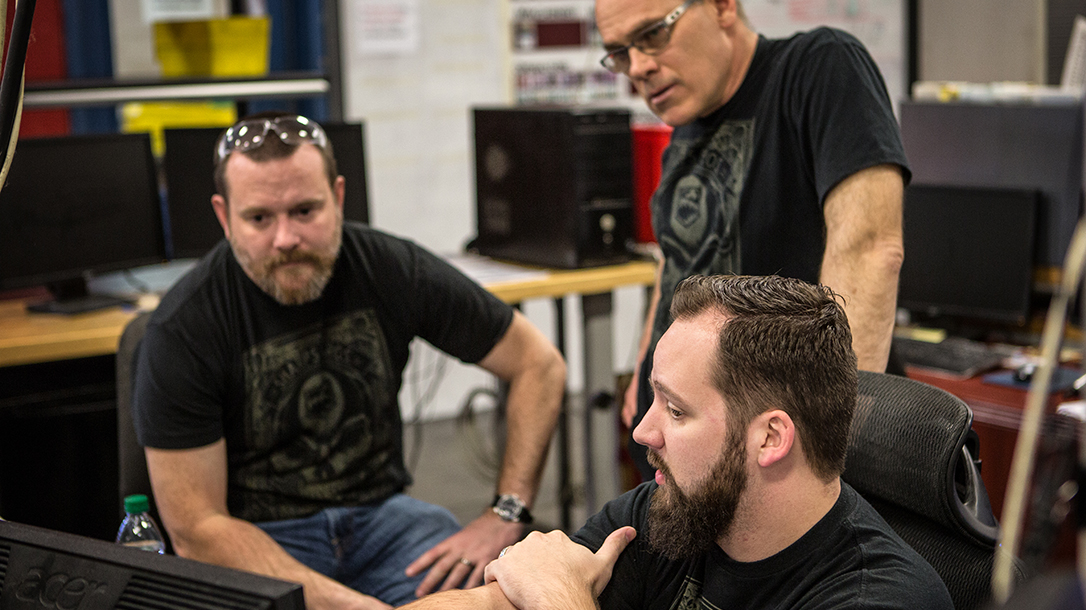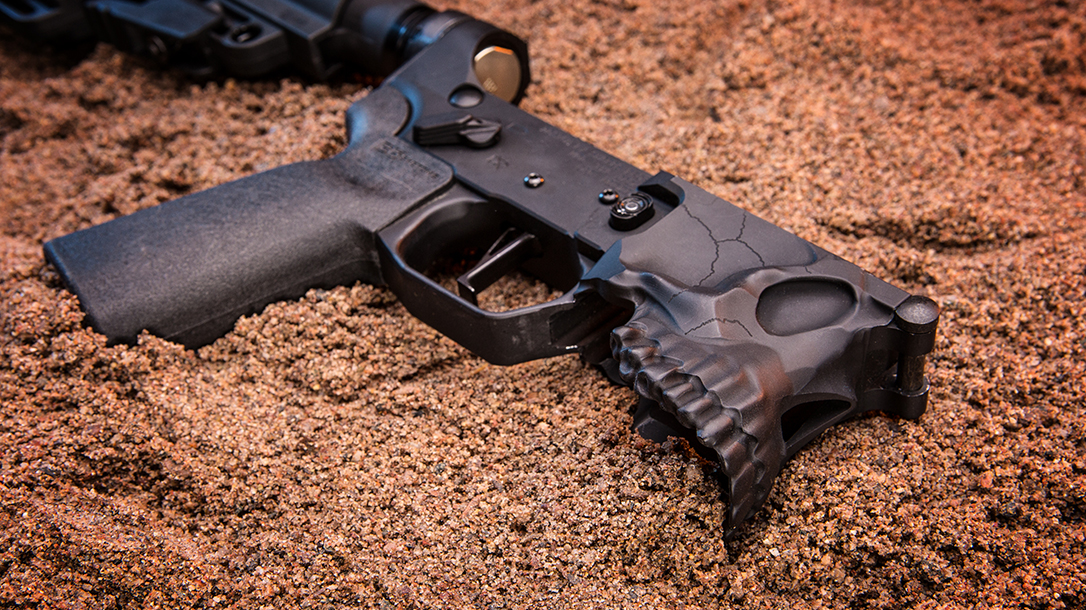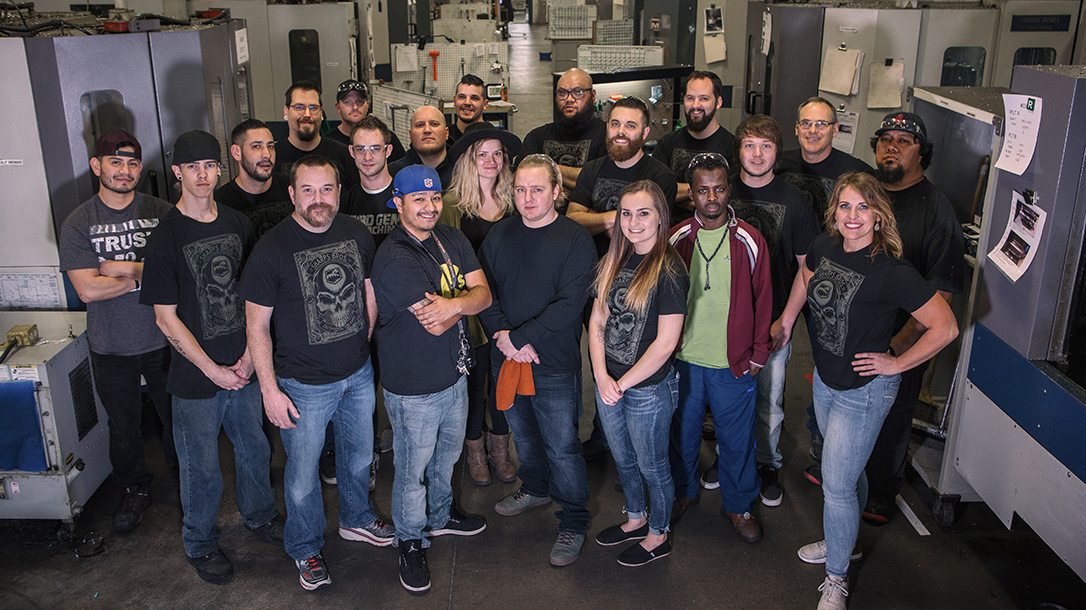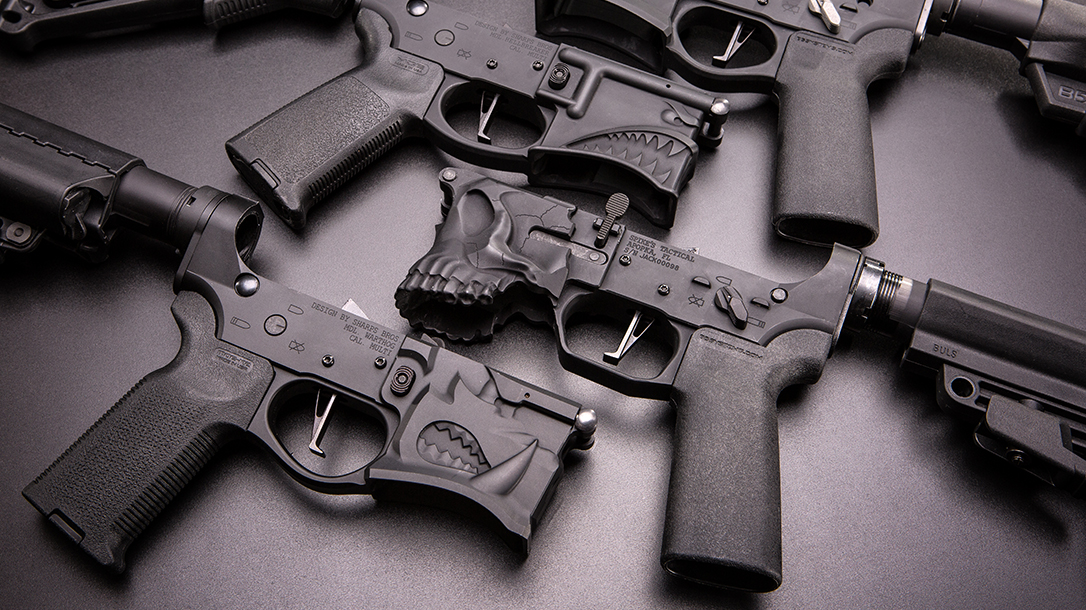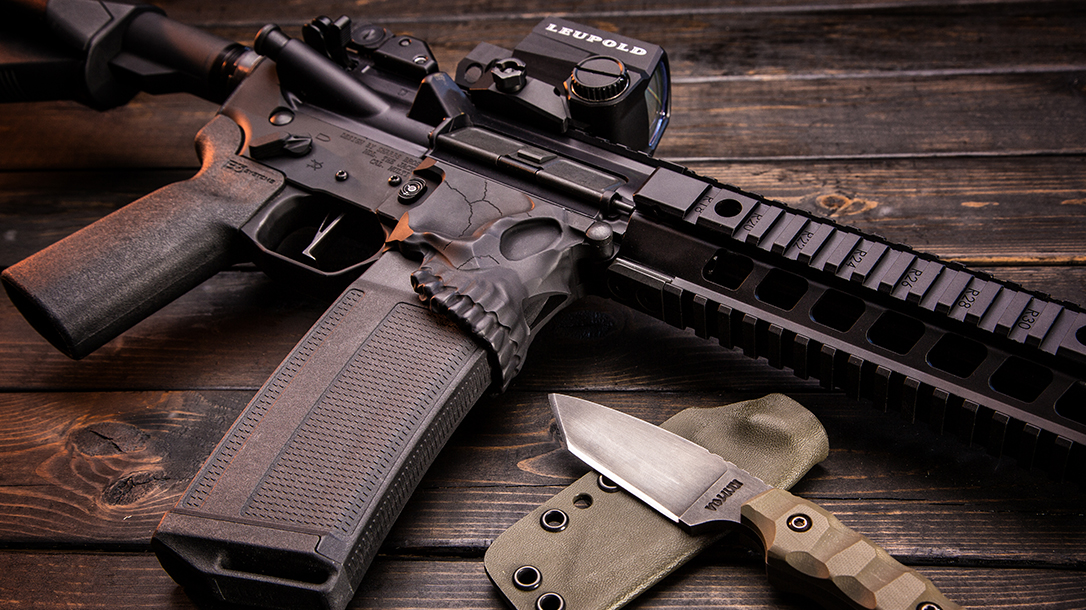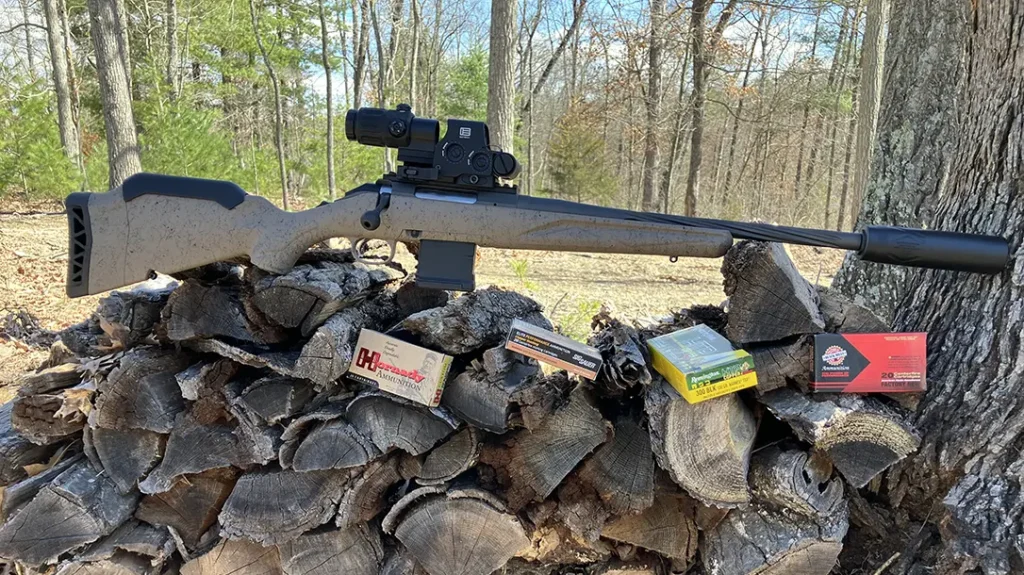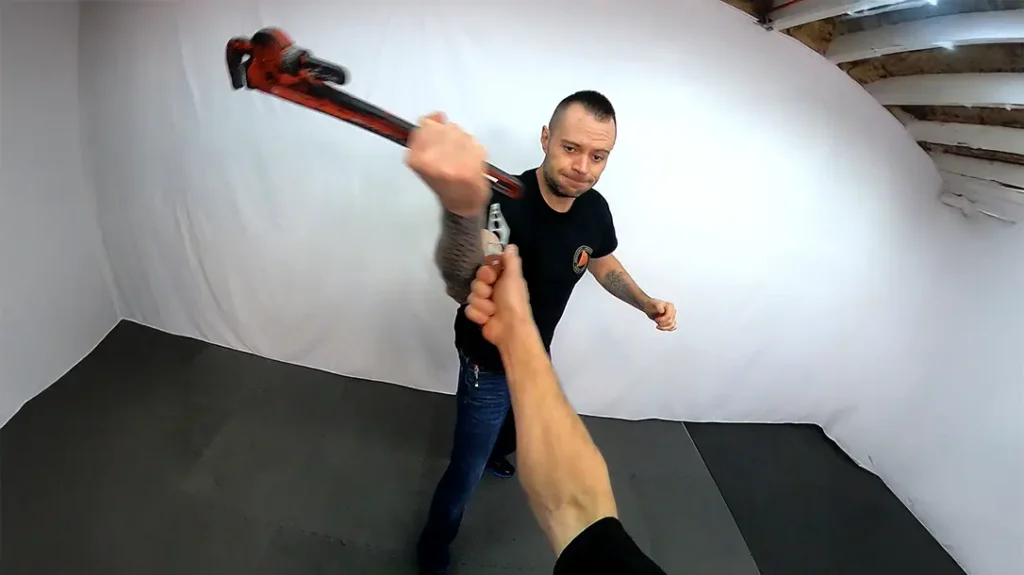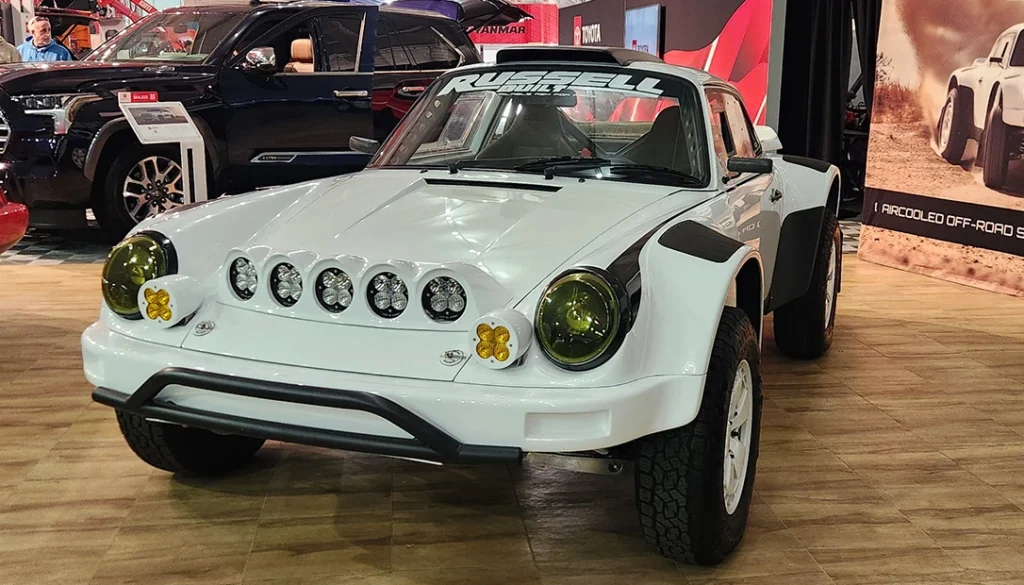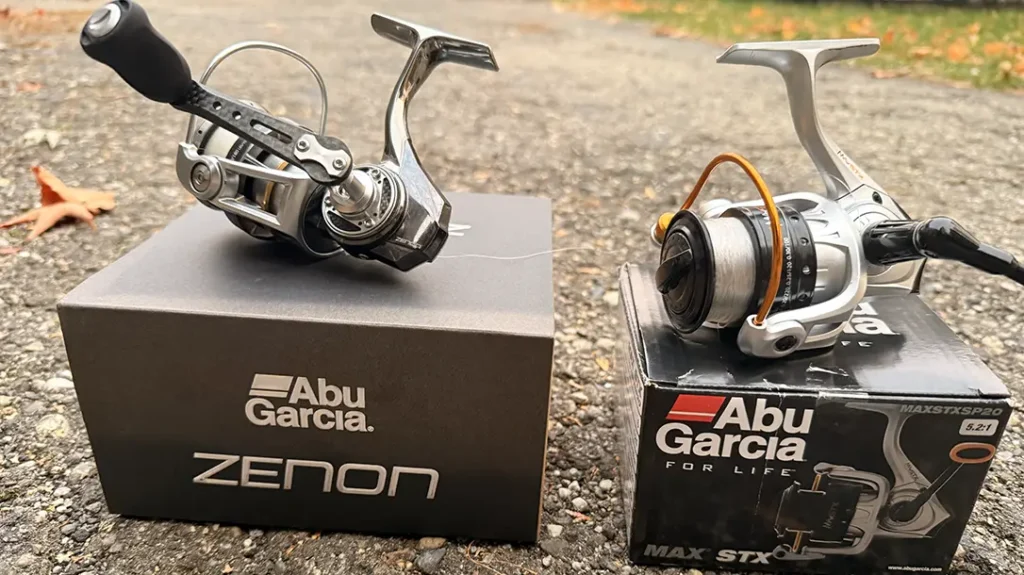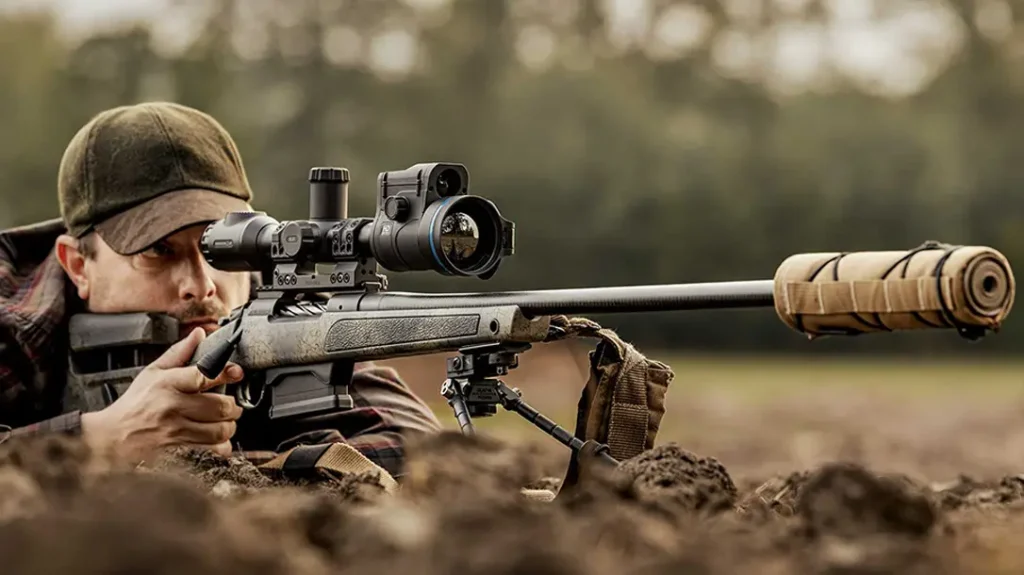Once upon a time … well, that may not be the most appropriate beginning to a story that includes a building full of CNC machines and firearms, but it is not as far off as it may seem.
When we see a new product hit the market, the focus is always on the product itself—what is new and interesting about it, how much it costs and other self-driven minutiae. What is rarely taken into account is just how something got from the idea phase to being an actual product in a consumer’s gun safe. While the world is replete with stories of this nature, there is one in our industry that is certainly worthy of a closer look. It’s time to say hello to John Sharps of Sharp Bros.
Advertisement — Continue Reading Below
Taking a Gamble
Sharps Bros. has become famous for its unique AR-platform lower receivers, including the Hellbreaker, the Warthog and the Jack. Never before had anyone made an effort to design a lower receiver with such a detailed character design. And to say that the company has been successful is a monumental understatement. You would be hard pressed to scroll through any social media outlet without coming across a picture of a Sharps Bros. lower in a build of some sort. They are as well made as they are eye catching.
Having been in this industry for a long time, the arrival of the Sharps Bros. lowers certainly caught my eye. While the designs intrigued me, it was the “why” and “how” that stirred questions in me more than anything else. AR lowers had become the white bread of the gun world, with only minor differences between them. For someone to make such a hard turn away from what is “safe” from a business perspective was interesting. It not only required that the person behind it have a wide set of skills, but also the guts to try and make it all work. I recently had the opportunity to sit down with John Sharps and get the story of how this all came to be.
The Inspiration Behind Sharps Bros
The story can be traced to an event that found John Sharps 200 feet underwater breathing a mix of helium, nitrogen and oxygen. An interest in technical diving and aircraft drew John to Lake Washington, near Seattle. With its proximity to a World War II airfield, the lake had unfortunately over the years become a graveyard of WWII military aircraft that had crashed into its clear freshwater. While tragic, the nature of the lake preserved many of these aircraft, and diving the wrecks has become a draw to many.
Advertisement — Continue Reading Below
Fast-forward just briefly to a rainy Seattle day and John taking his kids to the National Air and Space Museum. The goal was to show them some of the aircraft he had seen underwater. This trip to the museum would in fact be the catalyst for everything to follow. As they rounded a corner in the museum, they came upon an iconic P-40 Warhawk of the Flying Tigers fame. The classic tooth-filled mouth and hard eyes painted on the aircraft are immediately recognizable anywhere. It was at this point that John told his wife, “Someone should put that on a receiver.”
To add some even more interesting background to this story, we need to look briefly at John Sharps’ history. He is an avid hunter that grew up with a father who taught him to shoot early on. The lessons and time spent outside were almost all field-centered and focused on putting meat in the freezer. The intricacies of weapon design were never a part of his youth. As an adult, John would flourish in new product development in the electronic hardware space. In his career, he would gain invaluable new product development experience that would help in this new adventure.
Advertisement — Continue Reading Below
With an idea in his head and some notes scribbled down, he went back and grabbed a friend who happened to be a mechanical engineer. Together, they began the process of designing an AR lower receiver that would eventually become the Hellbreaker. John offered an interesting point when we were talking about the process. He said, “It was an interesting time with people just beginning to do laser engraving on receivers. It was also an intersection of time and technology with the new (at that time) growth of 3D printers.”
The first question they asked each other was whether they could get a 3D model done. After months of work, they finally figured it out. With a borrowed 3D printer, the first Hellbreaker sample came to life. Now that he had something solid in hand, John began to slowly share the design in an attempt to gauge interest, from friends to forums online. What became apparent was that people either loved it or hated it—with equal passion. The takeaway that John gained from this was a belief that “something that caused so many people to talk about it would sell.”
Driving Onward
The search then began for someone to actually manufacture the lower. A very helpful figure in the process was the late John Noveske. According to John, “He was open and friendly about it and offered great advice.”
Advertisement — Continue Reading Below
But Noveske wasn’t in a position to take on the project, so John took a bold step and showed up on the doorsteps of Mega Arms.
As he put it, “I contacted Mega Arms and tried to get a meeting with them, but making it happen was tough. The company was only about an hour south, so I decided to just drive down and walk in. I made the trip, walked in and asked to see the general manager because I had a product for him to see. The receptionist explained that he was super busy, so I told her I would wait. There was nowhere to sit, so I literally just stood there, my sample in a box. He was busy, so I had to wait and wait.
“The manager finally came out came out and looked at the model. I will never forget his response; ‘Wow, you are going to sell a lot of those almost no matter the cost.’ Their machines were maxed out, though, so even though he loved the idea, they could not take on a new project.” With positive feedback from John Noveske and Mega Arms, however, John was motivated to keep looking.
Advertisement — Continue Reading Below
A new plan was then put into action. He believed that if he could produce a quantity of 80-percent lowers, it would be easier to eventually team up with a company. In his electronics career, John had purchased large quantities of machined goods over the years. One shop he had dealt with in Utah was exceptional, so that was his first stop with the new plan. After some arm twisting, an agreement was made and the first 80-percent Hellbreaker was produced.
Because of the company’s unique designs, John realized Spike’s Tactical was the best opportunity to take his design the rest of the way. After a trip to Florida to meet with Spike’s, an agreement was made and the company began to finish the 80-percent units Sharps was producing in Utah while working to obtain a Type 7 ATF license.
Advertisement — Continue Reading Below
Several months later, Sharps Bros. received its ATF license and began producing the unique lowers in-house. Sharps still has an exclusive distribution agreement with Spike’s to this day. I asked John about this and whether he would be building complete rifles. His answer was intriguing.
“I want to be what Shelby was to Ford. It is always better to partner with people,” he said. “We have a world-class manufacturing facility and are very good at design, but we would rather partner with people on actual rifle builds. Together, we make a much better product.”
This philosophy has proven fruitful, as a recent partnership with Rifle Dynamics has produced an entire line of AK rifles based on Sharps Bros. new MB47 receiver design.
Further Sharpening
Today, Sharps Bros. has grown far beyond its owner looking for someone to take time to meet with him. The company has developed a world-class manufacturing facility in Utah that employs 35 people and runs three shifts 24 hours a day. The complexity of the company’s designs has increased as well. For example, the renowned Jack lower receiver consists of more than 3 million lines of CNC-machining code as opposed to an average of 250,000 for regular lower receivers. It is also the most popular product Sharps Bros. makes as well, outselling all others 5 to 1.
The general plan behind new product development is to try to release something new per year. While It sounds like a calendar-based decision, it is more centered around development time. As John Sharps put it, “From a sketch on a napkin to actual production, it takes about a year.” It is a little like Christmas then, as we wait for the newest Sharps Bros. designs to hit the market.
John Sharps embodies much of what this country is built on. He is an entrepreneur that put in the effort, time and money to develop a product he believed in. When a barrier would arise, he would find a way around it. He shared that he had always wanted to be in business for himself, and many of the paths he took in life prepared him for it. The fruits of his labor are obvious. While the Hellbreaker opened the doors for him, his subsequent designs have only continued to elevate him as an artistic innovator in the firearms world.
For more information, visit SharpsBros.com.
This article is from the summer 2018 issue of Ballistic Magazine. To subscribe, please visit OutdoorGroupStore.com.
